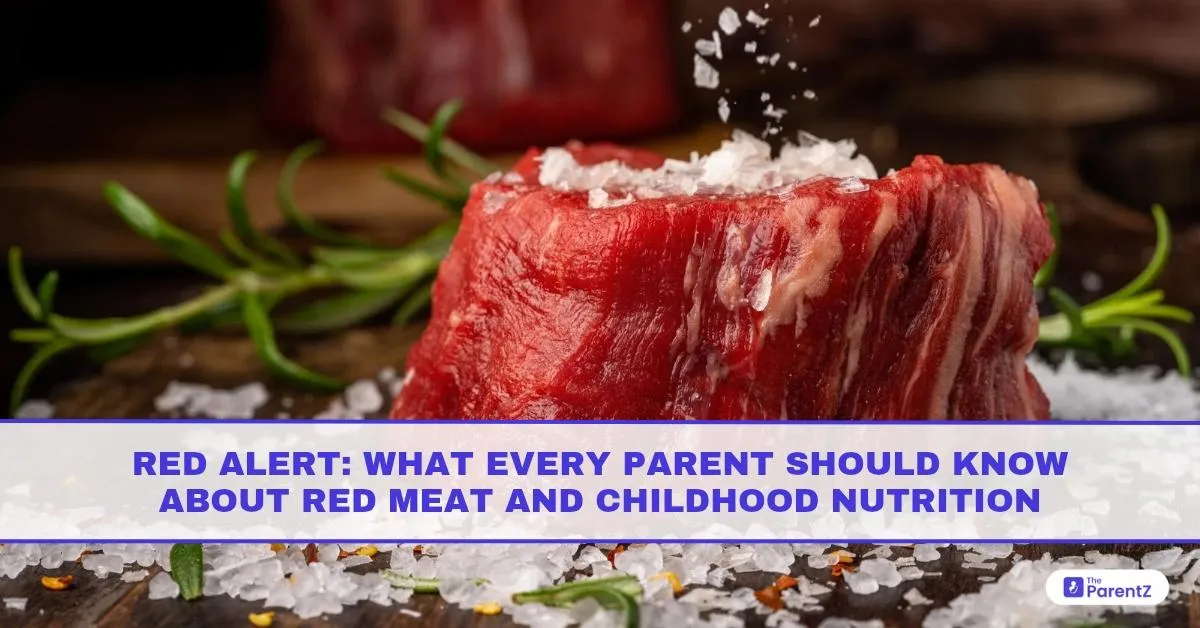The Red Meat Dilemma in Indian Homes
In many Indian families, especially those who consume non-vegetarian diets, red meat is often seen as a sign of strength, nourishment, and good health. Mutton curry on Sundays, kebabs on birthdays, keema for school lunchboxes, these meals are cherished and celebratory. But when it comes to young children, how much red meat is too much? And is it really the best source of protein and iron we think it is?
As a dental professional who works closely with children and their families, I often see how diet, not just sugar, impacts a child’s oral health, digestion, and overall development. And red meat, while nutritious in the right quantity, comes with hidden risks when consumed too frequently or in large amounts.
What Counts as Red Meat?
Red meat refers to meats that are red when raw and typically darker in color after cooking. Common examples include:
- Mutton (goat or lamb)
- Beef (banned or restricted in many Indian states, but consumed in others)
- Pork
- Organ meats like liver and kidney
- Minced or processed red meats like sausages or keema
Unlike chicken or fish, red meat contains more myoglobin, a protein that stores oxygen in muscle, giving it its rich red color.
The Nutritional Value of Red Meat
Red meat is a good source of:
- Protein: Essential for muscle growth and tissue repair
- Iron: Especially heme iron, which is absorbed better than plant-based iron
- Zinc: Important for immunity and wound healing
- Vitamin B12: Supports nerve function and red blood cell production
In moderation, red meat can be a helpful part of a child’s diet, especially in cases of iron deficiency anemia.
But as with any food, more does not always mean better.
When Red Meat Becomes a Problem
Pediatric nutritionists and dental professionals alike now caution against frequent or heavy consumption of red meat in children under 12 years of age. Here’s why:
1. Tough on Tiny Tummies
Red meat is harder to digest than chicken or plant proteins. The fat and muscle fibers require more effort from the child’s developing digestive system. This can lead to:
- Bloating or abdominal discomfort
- Constipation (a common complaint in red meat-heavy diets)
- Reduced appetite for fiber-rich foods like vegetables or fruits
2. Early Damage to Teeth and Gums
Red meat tends to be chewy and fibrous. For young children with developing teeth or mixed dentition (milk and permanent teeth), this can:
- Strain erupting molars
- Trap meat fibers between teeth, leading to plaque and decay
- Cause premature wear in children who grind meat aggressively while chewing
As a dentist, I often see more plaque accumulation in children who consume red meat frequently but are poor brushers—especially if flossing is not part of the routine.
3. Risk of High Saturated Fat
Most cuts of red meat, especially mutton, contain saturated fat. In excess, this can lead to:
- Early weight gain
- Poor cholesterol profiles in teenagers
- Increased risk of non-communicable diseases later in life
While it may not show immediately, these eating patterns influence long-term heart health and metabolic health.
4. Linked to Processed Meats and Salt Overload
When children get used to red meat early, parents may also include processed options like:
- Salamis
- Sausages
- Burgers
- Ready-to-eat kababs or nuggets
These are often high in sodium, preservatives, and additives that burden the kidneys and contribute to poor eating habits.
How Much Red Meat Is Safe for Kids?
There’s no one-size-fits-all number, but general recommendations include:
- 1–2 servings per week is considered safe for school-aged children
- Serving size: ~50–75 grams of cooked meat for a 4–10-year-old
- Avoid daily consumption or replacing plant-based proteins with red meat entirely
It’s important to rotate protein sources: dal, paneer, eggs, legumes, tofu, chicken, and fish offer excellent nutrition with fewer long-term risks.
Dental Perspective: What I See in the Clinic
Many parents don’t realise the impact of sticky or fibrous meat residues on their child’s dental health. These are common issues we observe:
- Meat fibers stuck between molars: If not cleaned properly, they decay and cause bad breath or cavities.
- Early gum irritation: Especially if flossing is absent and meat fibers are regularly left behind.
- Low saliva flow: A high-protein diet may reduce saliva if hydration is poor, increasing cavity risk.
- Children with braces: Red meat is difficult to chew and often restricted for orthodontic patients.
Dental hygiene tips for meat-eating children:
- Encourage brushing twice a day with a soft-bristled brush
- Rinse the mouth or use a floss stick after meat-heavy meals
- Keep hydration high to support natural cleansing
- Visit the dentist every 6 months for check-ups and cleaning
What to Watch for: Early Warning Signs
Too much red meat can show up in small but important ways. Watch for:
- Bad breath even after brushing
- Reduced interest in fruits and veggies
- Constipation or bloating
- Increased dental cavities or gum irritation
- Tiredness or lack of appetite
- Weight gain beyond normal growth patterns
If any of these are present alongside a meat-heavy diet, it’s time to reassess food choices.
Better Protein Alternatives
You don’t need to cut red meat completely, but you can swap it out more often with:
- Eggs: Versatile, soft, and nutrient-dense
- Tofu or Paneer: Gentle on the stomach and teeth
- Moong dal, Rajma, Chana: Offer protein and fiber
- Chicken or fish: Easier to chew and digest
- Homemade nut butters or dry fruit laddoos: Healthy fats and protein
These support dental, digestive, and overall growth without the drawbacks of frequent red meat consumption.
A Final Word: Moderation, Not Elimination
“As a dentist who sees children daily, I know how deeply food habits affect not just the body, but the mouth. Red meat is not the villain but like any strong medicine, it needs the right dose. It’s about balance, not fear. A Sunday mutton curry with family is lovely. But every day? Not necessary for growth, and not great for health.”
Red meat can be part of a joyful, culturally rich childhood, but only if served in moderation and balanced with fruits, vegetables, whole grains, and better chewing hygiene. Because good nutrition isn’t about feeding children more, it’s about feeding them smart.









Be the first one to comment on this story.